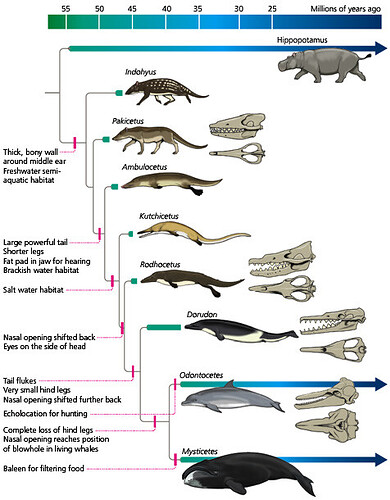Further…please answer the following…
If scientist Richard Sternberg calculated that it would take 100 million years to possibly obtain just two coordinated mutations towards the development of the whale…how long would it actually take for the entire animal to arrive on the scene via natural selection? Sternberg states that there are in fact many more than 2 pairs required to facilitate this change.
Now i accept that Sternberg has received critricism over his authority to have published an Intelligent Design article in the Evolutionary journal without adequate authority, however, this is a side argument to his calculations. The question is, are his calculations adequate and correct? If they are, then TE’s have a massive problem here in that Sternberg’s view of intelligent design for the appearance of whales would seem, in this way at least, extremely supportive of the Christian model of creation.
Now I think the publication by Sternberg causes enormous problems for the Darwinian timeline as it would mean actually many many billions of years for just this one animal (at best when we consider these mutations are also chaotic random accidents)…that is not the accepted timeline as far as i am aware.
Do they even have complete skeletons on each of the intermediate mammals in the following illustration? Are all of the skeletons examples of the evolutionary chain or are they different species that were designed this way in order to allow for a functioning system to work effectively?



